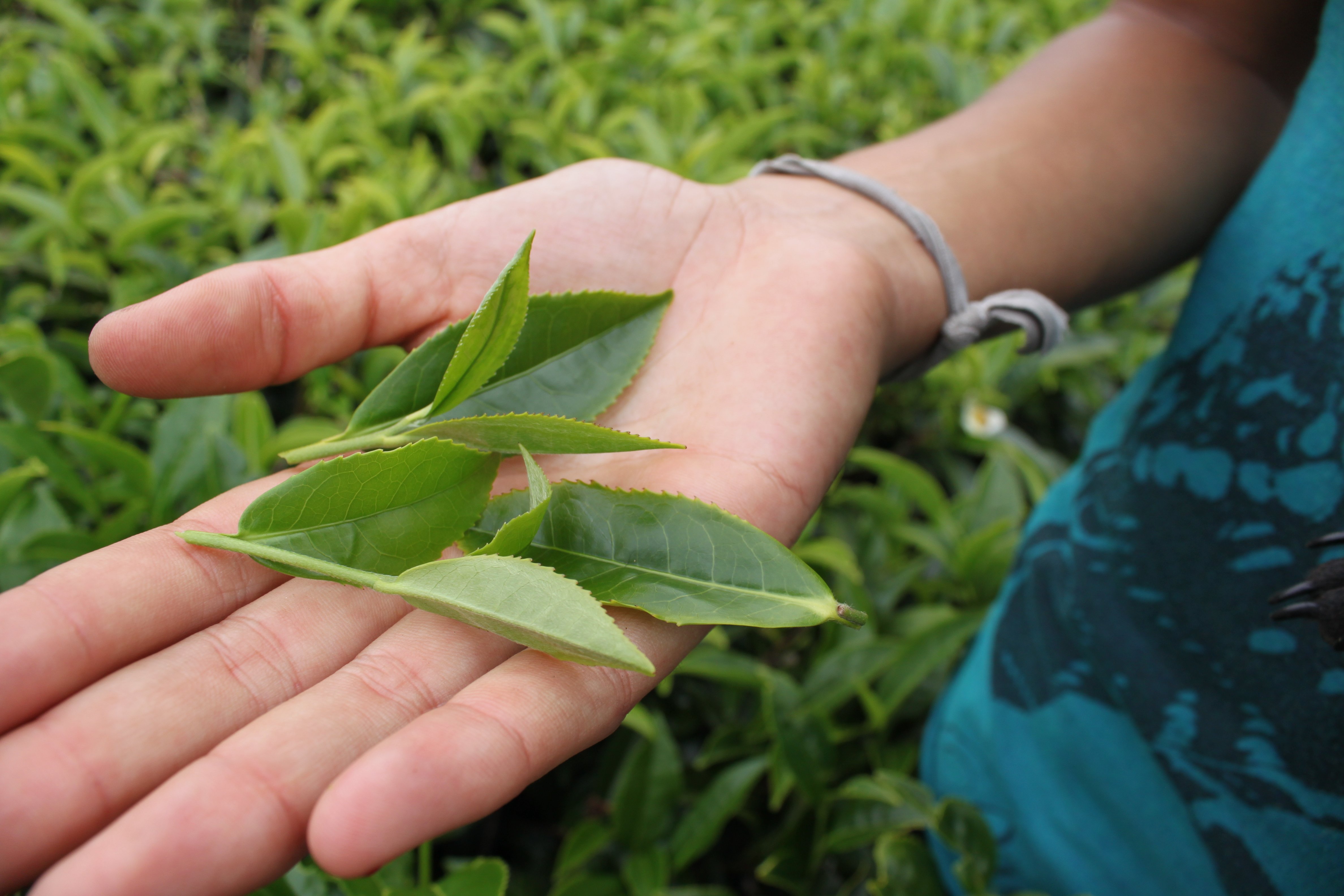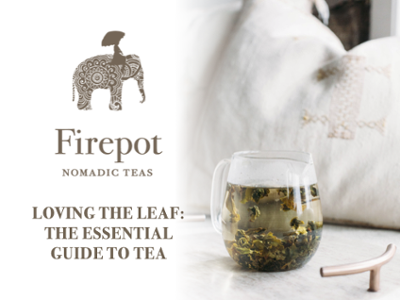For millennia, tea has been revered for its positive effects on body, mind and spirit. It has both changed cultures and been changed by them. Tea embodies places and brings people together.
According to legend, tea was discovered by the great herbalist and Emperor Shen Nung in ancient China in 2737 BC. Legend tells that while he was meditating under a tea tree, the wind blew and a leaf fell into his cup. He was so impressed with the meditative and restorative properties of the ensuing brew that he popularized the consumption of tea amongst his people. He wasn’t the only one to be mesmerized by the allure of “leaves and water.”

Our latest guide, “Loving the Leaf: The Essential Guide to Tea,” we laid it all out on the table for you! Inspired to share our knowledge and passion for tea, this guide is an amalgamation of years of learning, traveling and tasting. We’ve learned from master tea growers across the world and are excited to impart what we’ve come to love and appreciate about this amazing elixir of life.
In this guide, you’ll journey with us as we trace the evolution of tea across the globe: from Asia, to Tibet, India, Morocco, Sri Lanka, across Europe and into Turkey, then south to Rwanda and finally to the Americas. You’ll see photos from our own travels to the locations we source from and the people we’ve connected with along the way.

We’d be remiss if we didn't allocate space in this guide to the prodigious health benefits of tea. Since Shen Nung’s time, tea has been revered for its mental and physical health benefits. Mentally, it has been used for meditation and focus for millennia. Beyond mental and physical health, tea is revered as a plant to promote spiritual wellness as well. What science cannot prove can be experienced via a daily tea practice, or ritual, of one’s own.
This guide shares information on the origins of tea, processing methods (including a chart!), and the different methods of harvest that can result in a single type of tea yielding very different flavor notes.
We also tip our hat to what we identify as the 10 different types of tea: white, green, yellow, dark, semi-oxidized, oolong, pu-erh, aged, red, and of course - black. Knowing the types will help you be a better consumer of tea and more confidently explore the different types and tastes that are available.

And no guide would be complete without an exploration of herbal teas. These tisanes and botanicals have enriched our appreciation for a cup of tea by adding aromatic and flavor notes that make it truly your own.
We hope this new guide will elevate your understanding and love for the leaf that has changed the world. The more you learn about this extraordinary plant, the more you will be able to enjoy it!
So on behalf of all of us at Firepot Nomadic Teas...welcome to the enchanting world of tea! You can access your free guide by clicking here or on the image below.








Leave a comment
Comments will be approved before showing up.